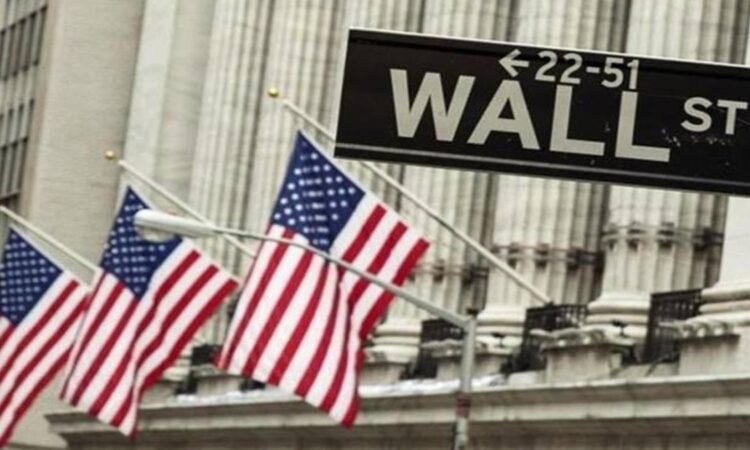Top 20 largest stocks in S&P 500 lead the rally but here’s why the market is in the danger zone now

Bloomberg: Sometimes when volatility jolts financial markets, the safest trades can quickly morph into dangerous bets.
That’s what’s happening now in some corners, as investors spooked by the bank crisis and central-bank uncertainty crowd into big-tech stocks and highly rated corporate bonds. The rush for defensive assets has made both so expensive relative to history that they could be prone to painful reversals.
Legal & General Investment Management and RBC Wealth Management are among the funds retreating from a blistering rally in tech stocks. Goldman Sachs Group Inc., meanwhile, has identified a cheaper and safer strategy in low-volatility stocks.
“That is the danger now, to get fully into defensive and buy overpriced assets,” Frederique Carrier, head of investment strategy at RBC Wealth Management, said in an interview. “Defensive sectors have become somewhat pricey and that is why we are not 100% up-in-quality.”
Across the spectrum of recessionary outlooks, from those who expect a soft landing to those bracing for a hard one, money managers have been gravitating to quality to shelter from the economic fallout of the collapse of three US banks and the government-sponsored bailout of a fourth in Europe.
The quality-heavy top 20 largest stocks in the S&P 500 have driven the stocks rally since the beginning of the year, with the index currently trading at a price-to-sales ratio above the dot-com bubble’s peak. Similarly in Europe, quality defensives are trading at around a 60% premium to the Stoxx Europe 600.
Patrick Armstrong, chief investment officer at Plurimi Wealth, just sold out of his position in the luxury giant, LVMH, as he sees too much safety premium being priced into certain quality names. He continues to hold Apple Inc. and Alphabet Inc. but sees risk of a period of “dead money” where it takes a long time for performance to catch up with trading multiples.
“If you feel safe owning it its probably too expensive,” said Armstrong on Bloomberg TV, “a mean reversion trade is very likely.”
Long big tech stocks are currently the most crowded trade and investors are holding the most bullish positioning in investment-grade credit versus high-yield on record, according to Bank of America Corp.’s latest fund manager survey.
This reflects investor confidence that big tech companies with rock-solid balance sheets and high free cash flow will weather a recession better than many companies saddled with heavy debt loads. Minutes of the Federal Reserve’s last meeting showed policymakers scaled back expectations for rate hikes after a series of bank collapses roiled markets and bolstered forecasts of a “mild recession” starting later this year.
At the same time, the potential that central banks will temper aggressive rate hikes and eventually pivot to easier policy may drive further gains. The link between the tech-heavy Nasdaq 100 index and duration, a measure of rate sensitivity, could spell double-digit gains with every rate cut.
“It’s not necessarily expensive for the late cycle position we are in,” said Christian Mueller-Glissmann the head of asset allocation for portfolio strategy at Goldman Sachs Group Inc., confident that although pricier, quality trades will outperform in a decelerating growth environment.
Still, he’s recommending investors add exposure to low-volatility stocks, expected to remain stable in churning markets, while sharing characteristics, like strong balance sheets and profitability, with more expensive, quality peers. The Nasdaq includes Procter & Gamble Co., Merck & Co. Inc., Roche Holding AG and Verizon Communications Inc. in its list of low-volatility stocks.
The market has “forgotten about low volatility as a style,” he said. “They got lost after the Fed pivot in 2018 but they have historically outperformed in a bear market.”
Goldman is also warning investors over holding long credit positions, as the asset class often under-performs in late cycle as default rates tick up. Mueller-Glissmann stresses that while equity markets have a “survivorship bias,” given the dominance of quality defensive names, credit indexes haven’t seen the same composition shift, with risk of more exposure to cyclicals.
Yet, ETF flows show investors continue to pour into investment-grade credit funds, with a total of $54 billion of inflows since the beginning of the year, compared to $6 billion of outflows for high-yield counterparts.
John Roe, a money manager at Legal & General Investment Management, is positioning his portfolio for a downturn. He has his doubts about quality stocks with lofty valuations and how they’ll fare in volatile markets and prefers to play short credit positions.
He just exited an overweight on tech stocks, turning neutral, and has been adding AAA rated European supranational credit that offers a premium of 60 basis points to government debt instead.
“Tech’s outperformance in March was extreme,” said Roe. “Once investors know we’re definitely going into recession, regardless of how bad that recession could be, that would be enough for a repricing.”






